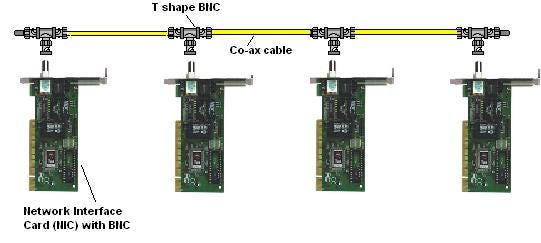It Changed Our World As Few Things Have Done in the Whole History of Human Kind: Ethernet

It Changed Our World As Few Things Have Done in the Whole History of Human Kind: Ethernet
In our teaching, we have been lucky to have two Turing Prize winners as quest speakers: Len Aldeman (the “A” in RSA) and Marty Hellman (the “H” in the DH key exchange method). If you don’t know about the Turing Prize, then it is the nearest that Computer Science has to a Nobel Prize in Physics. And, so, this week it was announced that Bob Metcalfe would receive the latest prize. Why? Well, he invented Ethernet.
Overall, Ethernet basically built the Internet, and is the most common method to connect to a network. Even Wi-fi is built around an Ethernet-type format for its data packet integration. From 1Mbps data rates with coaxial broadcast methods (CSMA/CD), it has scaled with network switches to give rates of 100Gbps.
Bob outlined Ethernet on 22 May 1973 at the Xerox Research (PARC) lab. He went on to found 3Com, and which was acquired by Hewlett-Packard in 2009 for $2.7 billion.

Overall, Ethernet fitted into Layer 2 of the OSI model, and where we create data frames to take the Layer 3 data packets and encapsulate them for transmission (Figure 2).

For me, Ethernet was my first introduction to networking, and where I looked after the networking infrastructure for our department. At that time there were no network switches, and so the computers often connected using a BNC T-piece and with coaxial cable (Figure 3). In its original form, it used CSMA/CD (Carrier Sense Multiple Access/Collision Detection). In this way, a node is required to broadcast a signal to the whole network, and wait to see if there is a collision (where another node is already trying to transmit at the same time). As we could have up to a 1km length of the network, it required the amount of time for the signals to propagate for the whole network, to know if another node was trying to transmit.

We thus have a contention network, and where no node is guaranteed to gain access to the network at any time. Every node must thus contend to get access. When a collision occurred, each of the nodes trying to gain access to the network, then back off for a random amount of time, and one of the nodes then gets access before the other one.
This CSMA/CD was fine when there were low data throughput rates, but struggled when there were heavy traffic rates, as the collision times will reduce the other bandwidth. At the time, Token Ring was the other contender and generally coped with higher throughput rates, as each node had an almost equal chance of transmitting than any other node.
A major problem with CSMA/CD was when someone disconnected their coaxial connection from the network (such as when they took their computer home for their holiday). With this, we need to create a matched stub, but often it was left as an open circuit. This caused as many problems as a short-circuit on the line, as signals would “bounce off” the open circuit. This caused RF cancellation in places, and cause the whole network to slow down. The only was to test, was basically to trace the line and find which computers were working, and which were not. A line tester could also be used, and which measured the return time from the open circuit, and relate that to the distance to the fault.
So, how did the broadcast part work? Well, a node sent out a 1010…10 patterns with seven bytes of 1’s and 0’s — the preamble. At the same time, the transmitting node listens for the signals for another transmission within the transmission of the seven bytes.
And, so, the demand increased greatly, and CSMA/CD still struggled. The networking problem was added with an Ethernet hub which still used the broadcast method but was more reliable. From a security point-of-view, it was not good, as anyone could listen to all of the network signals. The network switch changed this and allowed us to multiply the bandwidth.
The three protocols that then built the Internet were then Ethernet (“data frame”), IP (“data packet”) and TCP (“data segment”). Overall, Ethernet encapsulates a start and end frame element. At the start, we have the preamble, followed by the destination MAC (Media Access Code) and source MAC. Followed by the Layer 3 protocol type. For an IP packet, this field has a code of 0x800, and for ARP (the local network discovery protocol) it is 0x806. Overall, Ethernet can be matched to other Layer 3 protocols. There is then a basic checksum at the end.

Conclusions
These days, we have switches that can run at the crazy speeds of 10Gbps, and which is a long way from the 1Mbps bandwidths of the past. Overall, Ethernet has allowed us to scale up and support ever-increasing requirements for network speeds. It is strange to think that when networks were first created, most of the network traffic was local. Often the 80/20 rule was used, and where 80% of the traffic was for local traffic, and only 20% to external traffic. Of course these days, most of our network traffic is destined for an external network, and so the gateway speed becomes very important for not creating a bottleneck.
And, so, thanks to Bob was his amazing creation, and which has truly changed our world as few things have done in the whole history of humankind.